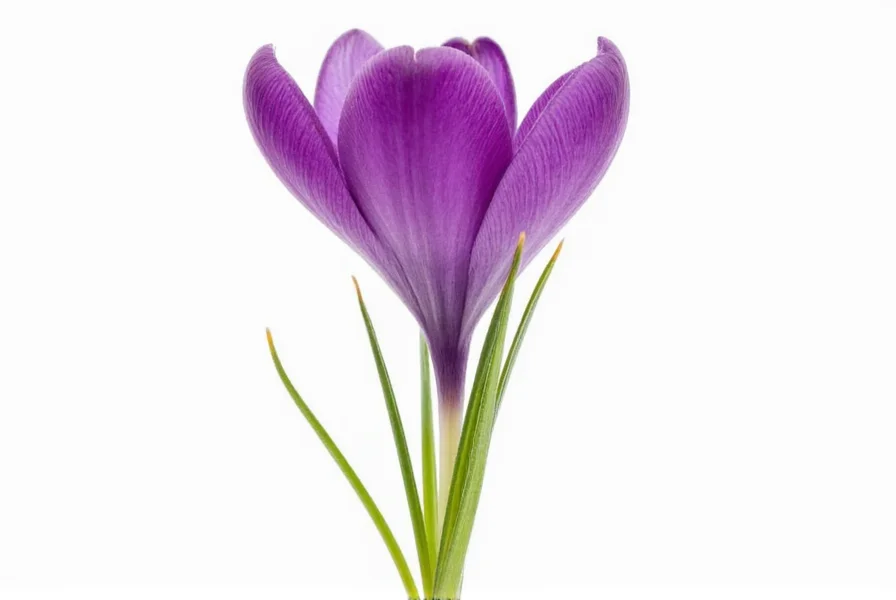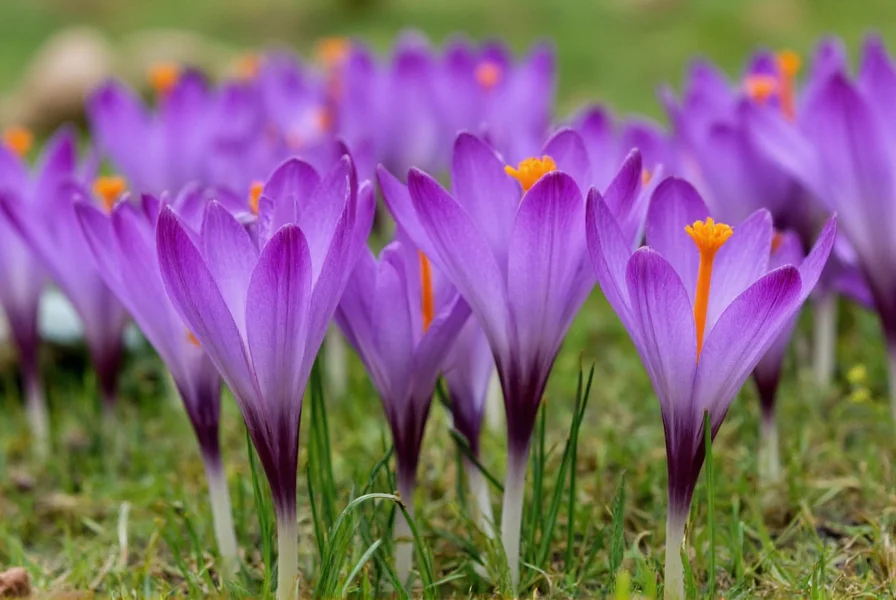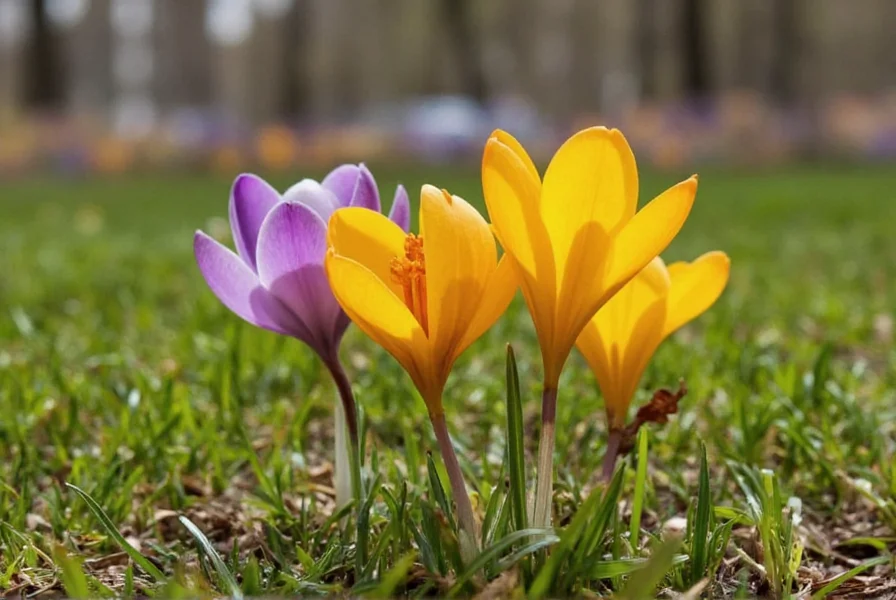Crocus sativus represents one of nature's most fascinating agricultural relationships between a specific plant species and the valuable product it yields. This unique crocus variety has been cultivated for over 3,000 years specifically for saffron production, with no other commercial purpose. Understanding the precise botanical characteristics and growing requirements of this remarkable plant reveals why saffron maintains its position as the world's most costly spice.
Botanical Characteristics of Crocus sativus
The saffron crocus displays distinctive features that differentiate it from other crocus species. Each plant grows to approximately 15-20 cm in height and produces solitary purple flowers with a characteristic sweet fragrance. The most valuable components are the three vivid crimson stigmas within each flower, which contain the compounds responsible for saffron's color, flavor, and aroma.
Unlike wild crocus varieties that reproduce through seeds, Crocus sativus is completely sterile due to its triploid chromosome structure (3n=24). This genetic characteristic means the plant cannot produce viable seeds, making manual corm propagation the only method of cultivation. Each flowering season, the original corm produces 3-5 new corms, allowing for gradual expansion of saffron crocus fields.

The Saffron Production Process
Harvesting saffron from Crocus sativus represents one of agriculture's most labor-intensive processes. Each flower produces only three stigmas, and it takes approximately 150,000 flowers (or 450,000 individual stigmas) to yield just one kilogram of dried saffron. The harvesting window is extremely narrow, as flowers bloom for only one week each autumn and must be picked early in the morning while still closed to preserve quality.
After harvesting, the stigmas undergo careful separation from the flowers, followed by a precise drying process that reduces moisture content from 80% to approximately 10%. This delicate process requires skilled labor and contributes significantly to saffron's high market value. The resulting dried stigmas contain crocin (responsible for color), picrocrocin (for flavor), and safranal (for aroma) - the key compounds that define authentic saffron.
Growing Requirements for Saffron Crocus
Cultivating Crocus sativus successfully requires specific environmental conditions that limit its commercial production to particular regions worldwide. The plant thrives in Mediterranean climates with hot, dry summers and cool, wet winters. Ideal growing conditions include:
| Growing Factor | Optimal Requirement | Notes |
|---|---|---|
| Climate | Mediterranean with distinct seasons | Requires summer dormancy period |
| Soil Type | Well-drained, calcareous loam | pH 6-8; poor drainage causes corm rot |
| Sun Exposure | Full sun | Minimum 6 hours daily |
| Planting Depth | 10-15 cm | Deeper in warmer climates |
| Irrigation | Minimal during dormancy, regular during growth | Overwatering causes fungal diseases |
Commercial saffron production occurs primarily in Iran (accounting for over 90% of global supply), with additional cultivation in Spain, India, Greece, and Morocco. Attempts to grow saffron crocus outside these traditional regions often face challenges with climate adaptation and economic viability due to the intensive labor requirements.
Historical Significance and Modern Applications
The relationship between humans and Crocus sativus dates back to ancient civilizations. Historical records indicate saffron use in Minoan Crete around 1600 BCE, with cultivation spreading throughout the Mediterranean region. Ancient Egyptians, Greeks, and Romans valued saffron for medicinal, culinary, and textile dyeing purposes.
Today, saffron maintains its status as a premium spice while also finding applications in traditional medicine and as a natural coloring agent. Research into the potential health benefits of saffron compounds continues, with studies examining crocin's antioxidant properties and safranal's potential neurological effects. However, these applications remain secondary to saffron's primary role as a culinary spice.
Common Misconceptions About Saffron Crocus
Several misconceptions surround Crocus sativus and saffron production. Many people believe saffron comes from multiple crocus species, but only Crocus sativus produces the authentic spice. Other crocus varieties may look similar but lack the specific chemical compounds that define genuine saffron.
Another common misunderstanding involves saffron cultivation requirements. While home gardeners can grow saffron crocus as an ornamental plant, commercial production requires specific climate conditions and represents a significant labor investment. The notion that saffron can be easily grown in any garden overlooks the precise conditions needed for viable saffron production.

Maintaining Saffron Crocus Health and Productivity
Sustaining productive saffron crocus fields requires careful management practices. Crop rotation every 3-5 years helps prevent soil-borne diseases and nutrient depletion. Organic matter incorporation improves soil structure and water retention in the well-drained soils required by Crocus sativus.
Pest management focuses primarily on preventing corm rot through proper drainage and avoiding over-irrigation. Field mice and birds can damage emerging flowers, requiring protective measures during the brief flowering season. The most significant challenge remains the intensive labor requirement for stigma harvesting, which occurs during a narrow 1-2 week window each autumn.
FAQ
Can you grow saffron crocus in a home garden?
Yes, you can grow saffron crocus in a home garden if you live in a suitable climate (USDA zones 6-9). Plant corms 10-15 cm deep in well-drained soil with full sun exposure during late summer. While you'll get beautiful purple flowers, harvesting enough stigmas for culinary use requires hundreds of plants due to the labor-intensive nature of saffron collection.
How long does it take for Crocus sativus to produce saffron after planting?
Crocus sativus typically blooms 6-8 weeks after planting corms in late summer. The first harvest occurs in the fall of the same year, though maximum yield develops in the second and third years as the corm population increases through natural division. Each corm produces 3-5 new corms annually under optimal conditions.
Why is saffron from Crocus sativus so expensive compared to other spices?
Saffron's high cost stems from the extremely labor-intensive harvesting process. Each flower produces only three stigmas, and it takes approximately 150,000 flowers to yield one kilogram of dried saffron. The harvesting must be done by hand during a narrow 1-2 week blooming period each autumn, with stigmas requiring careful separation and precise drying. This combination of biological limitations and labor requirements creates saffron's premium price.
How can you identify genuine saffron from Crocus sativus?
Authentic saffron consists of thread-like red stigmas with a trumpet-shaped end. When placed in warm water, genuine saffron releases a golden-yellow color gradually over 15-20 minutes while maintaining its red threads. Fake saffron often bleeds color immediately or consists of dyed fibers that lose color quickly. The distinctive honey-like aroma and slightly bitter taste also help identify real saffron from Crocus sativus.











 浙公网安备
33010002000092号
浙公网安备
33010002000092号 浙B2-20120091-4
浙B2-20120091-4